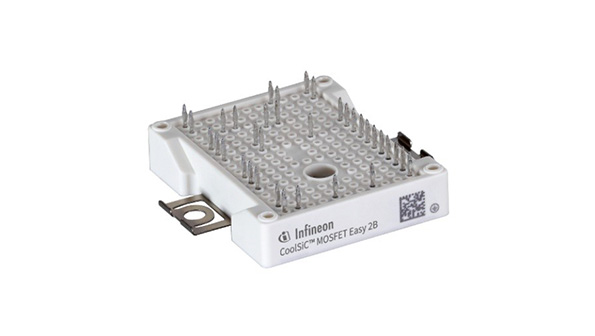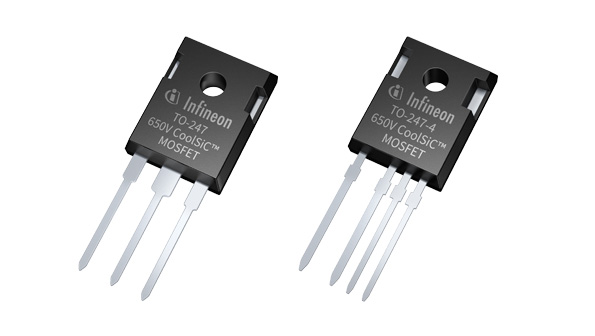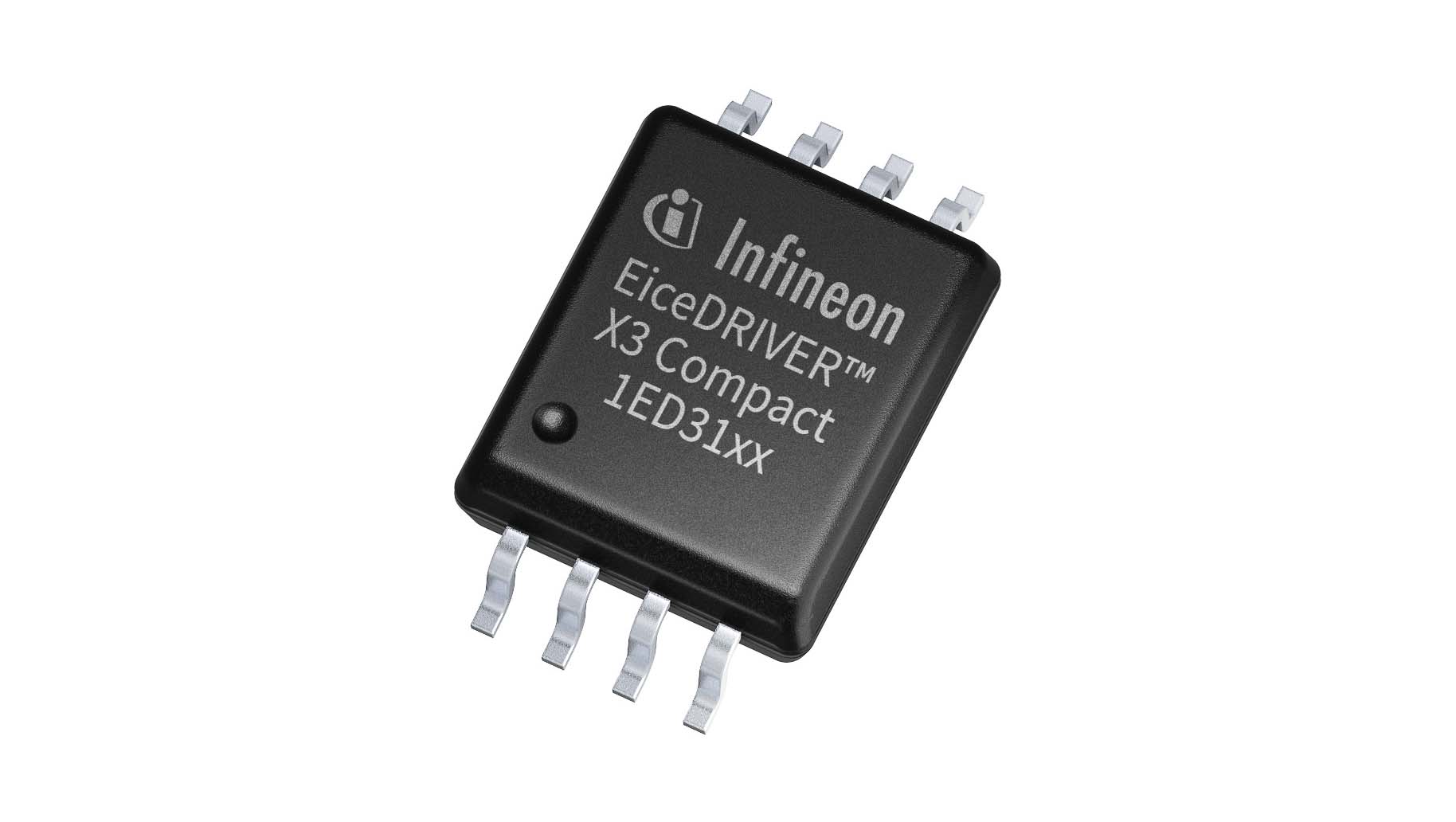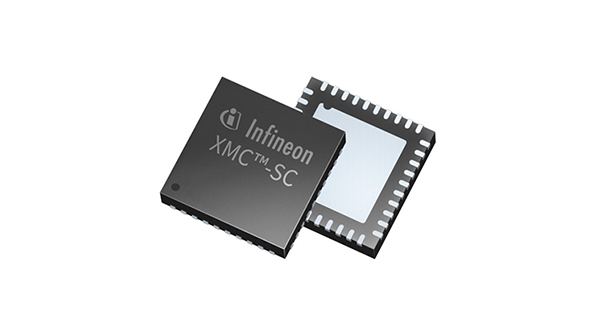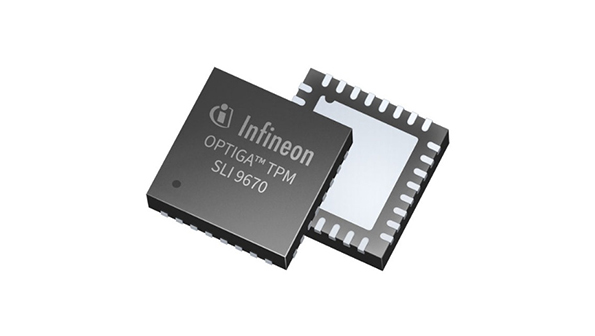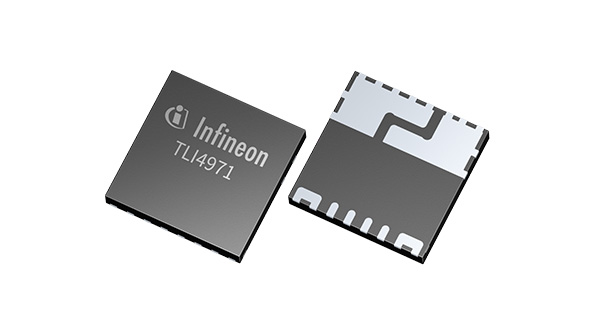EV charging
Please choose a subcategory
High-power solutions for fast EV charging

Along with the ever-growing number of electric vehicles on the market and pressure from governments to reduce vehicle emissions to zero latest by 2050, there is a strong need for more efficient charging solutions. As various consumer studies show, the acceptance of electromobility very much depends on the availability and duration of the charging process, high-power DC charging stations are the answer to these market requirements. Already today, a typical EV can charge about 80% of its battery capacity in less than 10 minutes. This is comparable to refueling a conventional car with internal combustion engine.
As the market leader in power electronics, Infineon helps you to bring energy-efficient DC fast charging designs to life. Benefit from one of the most comprehensive, ready-to-implement one-stop product and design portfolios on the market that covers the entire product range from power conversion, microcontrollers, security, auxiliary power supply, and communication.
Dive into the different types of EV chargers and find all information for your design
Advanced solutions from control to sensing to next level security and connectivity
For DC EV charging designs up to 150 kW, Infineon’s discrete products offer the best price/performance ratio. These include our 600 V CoolMOS™ SJ MOSFET P7 and CFD7 families, 600 V CoolMOS™ 8, 650 V IGBT TRENCHSTOP™ 5 and 650V/750V/1200 V CoolSiC™ MOSFET. Our CoolMOS™ and CoolSiC™ MOSFETs matchless advantages include high frequency operation, high power density and reduced switching losses, allowing you to reach high levels of efficiency in any battery charging system. Our portfolio of high voltage switches is complimented by 650 V and 1200 V CoolSiC™ Schottky diodes. Since every switch needs a driver, and every driver needs to be controlled, we also offer the matching EiceDRIVER™ gate driver as well as XMC™ and AURIX™ microcontrollers for EV charging designs. Infineon’s AIROC™ Wi-Fi & combos portfolio integrates Wi-Fi and Bluetooth® in a single-chip solution. OPTIGA™ products complete the portfolio and ensure data protection and security. Chargers in the power range above 50 kW are typically built with IGBTs CoolSiC™ MOSFETs and diode power modules, e.g. CoolSiC™ Easy Modules, IGBT EconoPACK™ and the IGBT EconoDUAL™ family. Charger piles with a capacity of more than 100kW are usually built in a modular approach with stacked sub-units. Already today, these sub-units have reached a capacity of 20-50 kW each and will go beyond this in future designs.
Promoting a global standard

Infineon is part of the international Charging Interface Initiative e.V. (CharIN). CharIN’s goal is to develop, establish and promote a global charging system standard for all kinds of battery-powered electric vehicles.
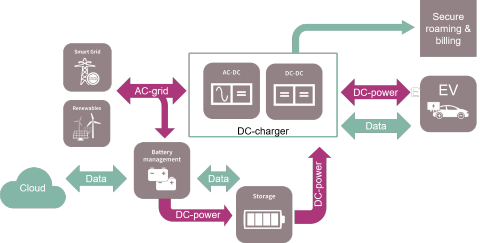
Typically, a high-power DC charger converts an incoming three-phase AC power into the DC voltage required by the vehicle’s battery. A data transmission channel is required to exchange information about the vehicle and the battery's state of charge. Finally, vehicle information and owner data are communicated through a secure data channel for billing purposes.
The three primary concerns in DC fast charger architecture are minimizing cooling efforts, providing high power density and reducing the overall size and cost of the system. High power density requires forced air cooling, which is standard today. However, the next generation of charging solutions will require liquid cooling driven by the system power density increase. Compact designs must consider higher switching speeds, in the range of 32 to 100 kHz, to reduce the size of magnetic components.
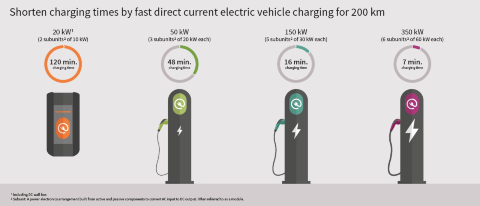
The strategies to achieve zero emissions latest by 2050 in most major cities worldwide relies in part on greater EV usage and therefore better fast charging infrastructure. Certainly, the high pollution index in cities, detrimental to inhabitants’ health and quality of life, is a motivation to reach this target. Zero or low emission mobility can help stem the prevalence of air pollution related health problems, such as cardiovascular disease and asthma.
The good news: by 2025 over 100 new EV models are set to launch on the market. This step in the direction of improved urban air quality adds pressure to develop and implement the charging infrastructure required to accommodate additional EVs on the road. Due to space limitations in urban area, future charging needs cannot be satisfied by private installations. Therefore, public charger will gain more and more importance to increase usability of urban eMobility. Finally, as battery manufacturers optimize their cost structures and economies of scale, electric vehicles have never been more attractive to purchase.
Getting rid of plugs and cables with wireless power transfer is a demand that is met by wireless charging systems. This inductive charging allows vehicles to be charged by means of energy passed from a coil in the ground of a parking space to a coil integrated into the vehicle.
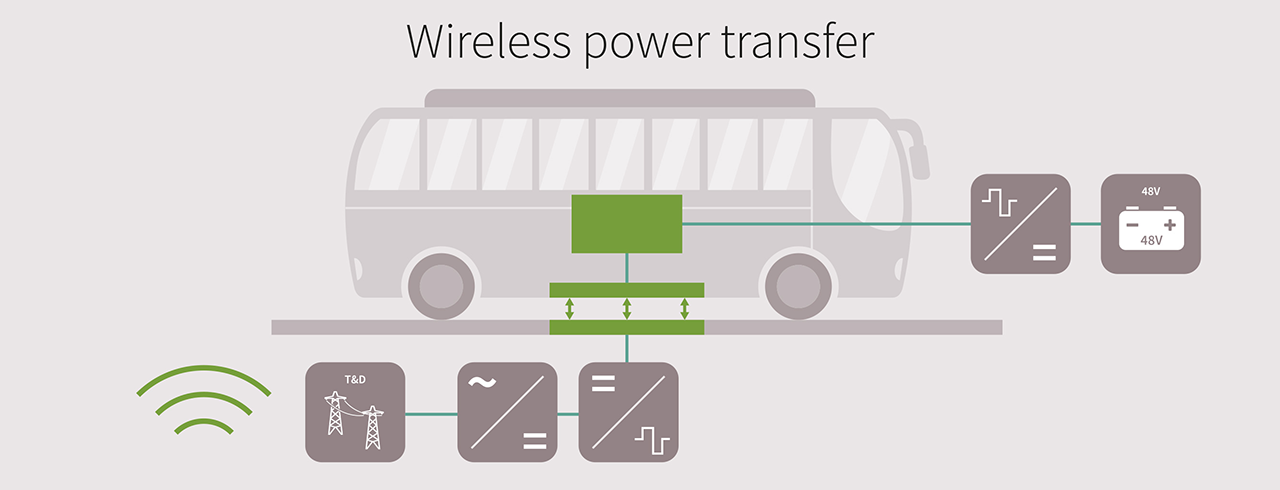
Characteristics of Wireless Power Transfer:
- Power Class: 3.7 kW, 7.7 kW, 11 kW
- Static WPT: Charge while the vehicle is not in motion
- Dynamic WPT: Charge while the vehicle is moving along the WPT enabled roadway
- DC/DC conversion inside the vehicle to adapt the input voltage to the converter
Explore the system diagram of a Wireless Power Transfer:
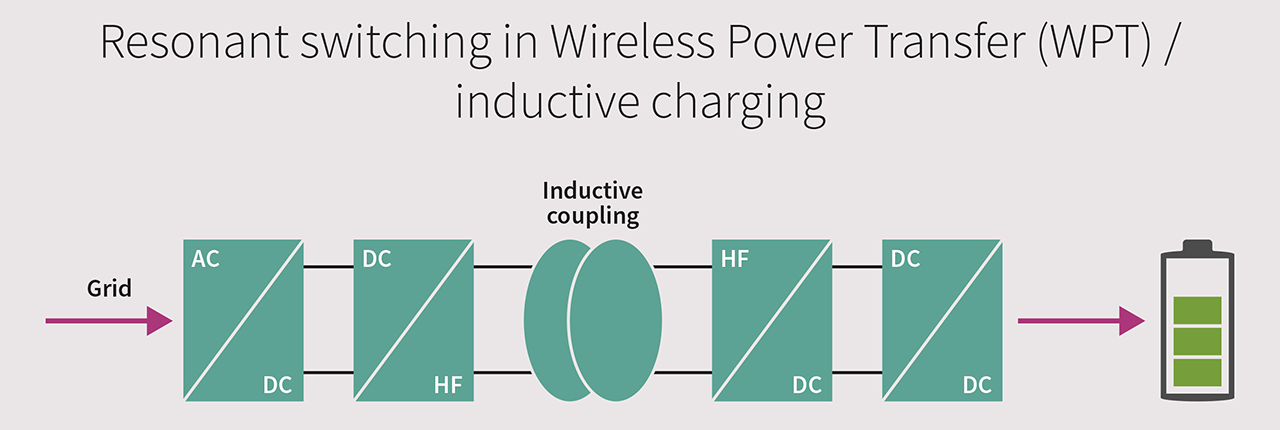
Different power-conversion topologies can be applied to build a DC-DC-stage. The resonant topologies are often preferred since these reduce switching losses. The DC-DC-Stage is installed in the car to align output voltage and battery requirements.
Wireless power transfer units are typically built with CoolSiC™ modules such as the EasyDUAL™ 1B 1200 V, 11 mΩ half-bridge module with CoolSiC™ MOSFET, CoolSiC™ diodes and CoolMOS, but many discrete implementations are also found in the field. Since every switch needs a driver, and every driver needs to be controlled, we offer the right EiceDRIVER™ gate driver ICs as well as XMC™ Microcontroller. With our current sensor solutions XENSIV™ we can enable small and accurate current sensing. OPTIGA™ products round out the offer, ensuring data protection and security.
The process of charging an electric vehicle at a charging point must allow for the identification, authentication and safeguarding of information that passes between the charger, the vehicle and the backend infrastructure. This requires cryptography that protects both the charging infrastructure and the vehicles that use it.
Part of the ISO 15118 international standard is the concept of Plug & Charge. It allows vehicles to be charged without having to present a special charging card at the charging station This provides a secured and convenient way to charge an electric vehicle that includes both wired and wireless charging technologies based on AC and DC subsystems. At its core, Plug & Charge is intended to ensure confidentiality, data integrity and authenticity, which is achieved through symmetric and asymmetric cryptography algorithms defined in ISO 15118.
To implement this standard, a tamper-proof microcontroller such as Infineon's OPTIGA™ TPM SLI 9670 Trusted Platform Module can be used, which is a standardized component according to the Trusted Computing Group (TCG) TPM standard. The TPM plays an essential role in securing the Plug & Charge financial transaction by protecting the authenticity of the entities involved, the integrity of the data exchanged, and the confidentiality of sensitive information.
In addition, the OPTIGA™ TPM SLI 9670 is also used for the platform protection and the secured data transmission between a server backend, the charging station and the EV. This is required to secure remote functionalities such as firmware updates, maintenance and management of the charging infrastructure devices.
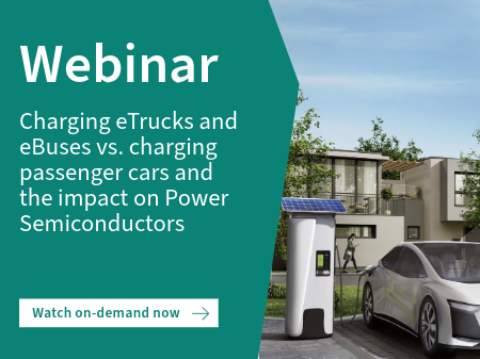
In this on-demand webinar, our expert will provide a high-level overview of truck and bus charging and its similarities and differences to passenger vehicle charging. In particular, we will discuss the impact that charging, especially in the megawatt range, can have on the selection of power semiconductors and how Infineon is positioned. Recharge your knowledge now.
Watch now
Podcast4 Engineers - DC vs. AC in EV Charging with Torsten Klemmer and Daniel Makus
In this episode, our application managers Torsten Klemmer and Daniel Makus discuss the strengths and weaknesses of both DC and AC charging designs for electric vehicles.
Podcast4 Engineers - Bi-directionality in EV Charging with Daniel Makus
In this podcast episode, our application manager Daniel Makus and host Fabian Schiffer talk about the new opportunities bi-directionality is opening up in EV Charging and other applications.
Podcast4Engineers: Vision for eMobility: 10kWh for 100km with Dirk and Christoph
In this episode, our expert guests Dirk and Christoph explain “10 kWh for 100 km” and discuss how semiconductors not only enable decarbonization in eMobility, but also ensure the “fun-to-drive” factor.
Charging your EV at home is convenient, but how do you choose a wallbox? In this episode of “Ask the Expert”, our expert Hakan explains what makes AC wallboxes unique.
Why is it important to keep your AC wallbox connected and secure? In this episode of “Ask the Expert”, our expert Hakan explains how connectivity can make your charging experience more convenient, efficient, and even save you money.
The training overviews the different types of chargers with focus on AC EV charging and its functionality, it also positions products from Infineon for the AC chargers with focus on control, connectivity and security. The training shows block diagrams of the difference solutions.
The training overviews the different types of chargers with focus on DC EV charging and its functionality, it also positions products from Infineon for the DC chargers with focus on control, connectivity and security. The training shows block diagrams of the difference solutions.
Webinars
In the technical introduction training, you became familiar with the full-bridge transformer driver family 2EP, which is a reliable power supply that supports Infineon’s top-notch switches and isolated gate drivers. By the end of this deep dive, you will be able to describe the working principle of this family and know about possible applications by understanding the effect of input voltage changes, transformer transfer ratio, and duty cycle changes on the isolated output voltage.
This video will introduce you to the 2EP EiceDRIVER™ power family, along with its features and advantages. Additionally, you will have an overview of the extensive application scope of the 2EP.
As electro mobility increasingly becomes part of our daily lives, the need for more efficient charging solutions is growing. With an eye on the requirements and technological developments in this field, the challenge is to respond with smart and compact power conversion solutions for the charging networks of today and tomorrow. In this webinar, you will gain deeper insights, into Infineon's comprehensive DC-EV charging portfolio with a focus on silicon carbide and its important contribution to ultra-fast EV charging.
Today's global challenges of decarbonization, combined with rising energy demand, make bi-directional electric vehicle charging and how semiconductor solutions support this application more important than ever. In this webinar you will get an overview of the power conversion topologies for bi-directional DC charging and take a closer look at an application example based on Infineon's 50 kW Reference Design.
Online Courses
In depth introduction of Infineon's one stop shop reference design for EV traction Inverter.

- Understand Infineon’s purpose in delivering quality above and beyond the standard and find out how we execute that standard in development, qualification, manufacturing and testing
- Learn where and how this high-quality standard is reflected and discover our success stories
With the growing market of electrical vehicles, the industry has put forward more requirements for the performance of charging piles. This e-learning will show you that the emergence of CoolSiC™ MOSFETs has improved the charging pile industry to make the EV charger smaller, faster and with higher efficiency.
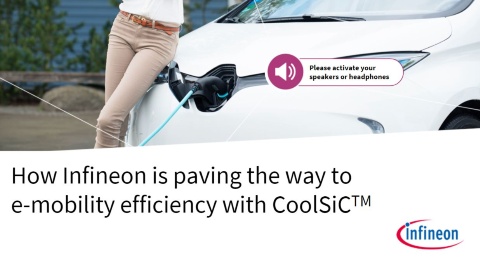
- Distinguish the features and benefits of Infineon’s CoolSiC™ solutions in target applications and identify Infineon’s fully scalable CoolSiC™ portfolio to meet this automotive market transition
- Explain the reasons for the increasing introduction of silicon carbide technology in the automotive applications
This training covers the harmonized frame of standards from international bodies like ISO, IEC, SAE and UL dedicated to the Wireless Power Transfer system technologies.
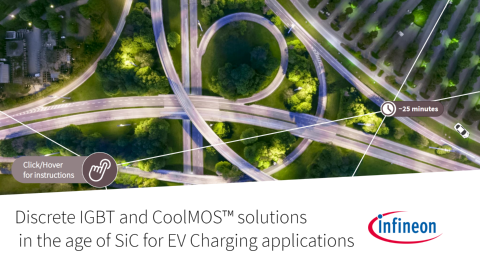
In this online course you will learn about cost-optimized, but highly efficient electric vehicles charging solutions based on IGBT and CoolMOS™, and explore Infineon’s wide portfolio that supports every segment of the EV charging application.

This training covers the most relevant standards for high power charger design, grouped into 4 major areas:
• charging topology
• communication
• accessories
• safety and security
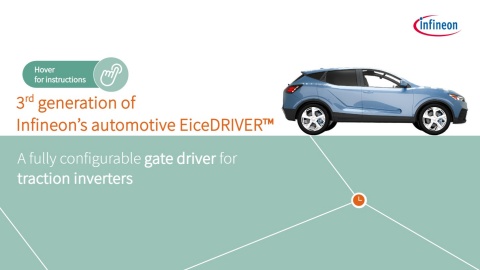
- The training covers detailed information about Infineon's 3rd generation automotive EiceDRIVER™ 1EDI305xAS
- Participants will learn how these products help to reduce switching losses and improve thermal efficiency, resulting in longer range for hybrid and electric vehicles
Every switch needs a driver, and the right driver makes a difference.
Infineon offers different isoalted gate driver families, such as the EiceDRIVER™ Compact and the EiceDRIVER™ Enhanced. Each family has different features to protect the switch and application.
The EiceDRIVER™ isolated gate driver offers advanced features such as reinforced isolation, Miller clamp, slew rate control and short circuit protection to protect the switch and application. It also enables condition monitoring and rapid prototyping.
The EiceDRIVER™ is the perfect fit for industrial application, particular in combination with Infineon CoolSiC™ and IGBT switches.
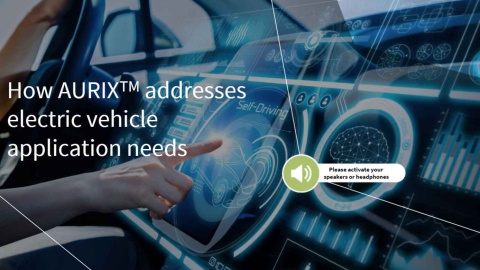
Training topics:
- Get to know how AURIXTM is able to answer the needs of the electric vehicle market
- Recognize and explore how AURIX™ TC3xx addresses key electric vehicle challenges, and understand the main features of the AURIX™ TC3xx microcontroller
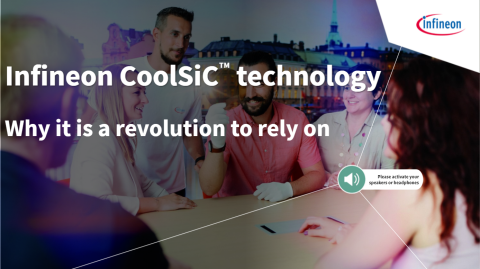
In this training you will:
- Be familiar with silicon carbide MOSFET structures and their characteristics
- Get to know Infineon's CoolSiC™ MOSFET, its features, its improvements over a typical trench MOS and how it performs against its competitors
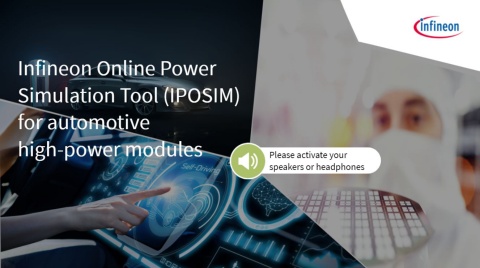
In this training you will:
- Get to know Infineon’s IPOSIM tool, specifically for an automotive electric vehicle inverter
- Discover the steps involved in simulating different parameters and comparing the results of different Infineon products to see which is the best fit for your application
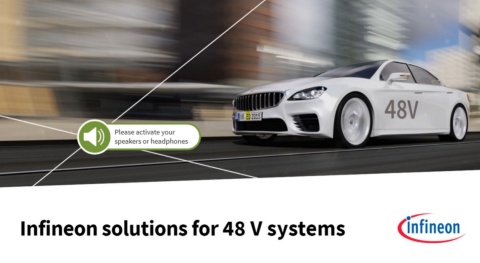
In this training you will:
- Learn about the transition from fule injection combustion engine to full battery electric vehicles and the main 48V powered applications.
- Additionally get an overview about Infineon’s comprehensive MOSFET portfolio for 48 V applications and their support material
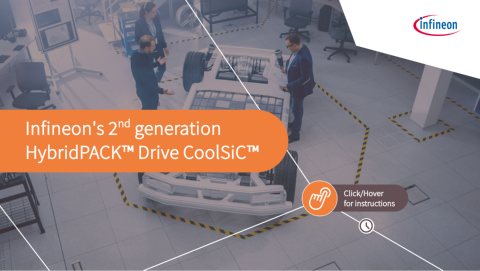
- Infineon's HybridPACK™ Drive silicon carbide compact power modules cater to the increasing demand for high range, efficiency, and power in electrified vehicles, enabling longer drive range, compact size, and optimized system cost.
- The second generation of Infineon's HybridPACK™ Drive, utilizing CoolSiC™ technology, offers a scalable product family with enhanced features and package improvements, providing added value to customers.

